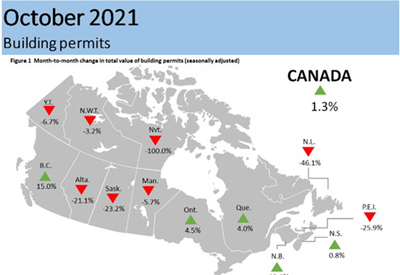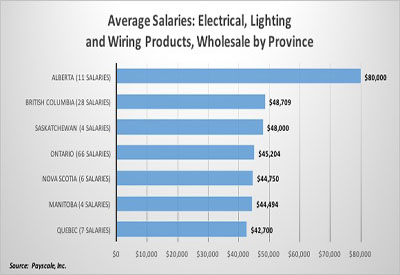Survey: Impact of COVID-19 on Businesses in Canada, March 2020

Apr 29, 2020
The Canadian economy changed dramatically in March as a result of COVID-19 and the situation has had a profound impact on the ability of businesses in Canada to operate. In order to better understand the impact of COVID-19 on businesses, employers and employees, communities and our economy, Statistics Canada and the Canadian Chamber of Commerce collaborated to launch the Canadian Survey on Business Conditions.
From April 3 to 24, 2020, representatives from more than 12,600 businesses visited Statistics Canada’s website and took part in the online questionnaire about how COVID-19 is affecting their business. Statistics Canada would like to thank participants who took the time to answer these important questions during this challenging time.
Readers should note that unlike other surveys conducted by Statistics Canada, crowdsourcing data are not collected using a probability-based sample design. As a result, the findings reported below cannot be applied to the overall Canadian economy.
Over half of all businesses see a decline of 20% or more in revenue
Nearly one-third (32.3%) of businesses who responded to the survey reported that their revenues from the first quarter of 2020 were down by 40% or more from the same quarter a year earlier. Another 21.2% of businesses reported their revenues had decreased by 20% to 40% over the same period.
Businesses in the accommodation and food services (72.6%), arts, entertainment and recreation (66.7%) and retail trade (60.3%) sectors were most likely to report a decline in revenue greater than 20%. In contrast, just over two-fifths of businesses in each of the agriculture, forestry, fishing and hunting (42.0%) and the utilities (40.4%) sectors reported either no change or an increase in revenue.
Across the country, over half of businesses in Alberta (57.7%), Ontario (56.3%), British Columbia (54.8%), Newfoundland and Labrador (53.5%) and Saskatchewan (52.8%) saw declines of 20% or more in revenue. In contrast, close to one-third of businesses in Prince Edward Island (33.1%), the territories (32.4%) and New Brunswick (30.3%) reported either no change or an increase in revenue.
Over one-quarter (28.6%) of businesses requested credit from financial institutions to cover operating costs due to revenue shortfalls caused by COVID-19. Financial institutions either fully or partially approved over three-quarters (77.3%) of these requests. In terms of businesses that pay rent, one-fifth (20.0%) had their rent deferred.
Just under two-thirds of businesses highly impacted by lower demand
Just under two-thirds (64.8%) of businesses reported being highly affected by lower demand for their products or services, while nearly half (48.5%) of businesses reported being highly affected by the need to cancel services they offered. Businesses in the accommodation and food services (88.7%), arts, entertainment and recreation (87.1%) and retail trade (72.5%) sectors were most likely to be highly impacted by lower demand for their products or services.
Employees face reduced hours, layoffs and greater remote work
The March 2020 Labour Force Survey reported that 1.3 million Canadians were away from work due to COVID-19. In addition, 2.1 million people worked reduced hours. Almost two-fifths (38.1%) of businesses reduced staff hours or shifts, while two-fifths (40.5%) of businesses reported that they laid off staff. Nearly one-fifth (18.3%) of all businesses laid off 80% or more of their workforce. Of the businesses that laid off at least one employee, 45.2% laid off 80% or more of their workforce. Of businesses in the accommodation and food services sector that laid off staff, over two-thirds (69.0%) reported layoffs to 80% or more of their workforce.
A significant proportion of businesses (27.0%) reported having implemented no changes with regards to staffing in light of COVID-19. Notably, over half (53.9%) of businesses in the agriculture, forestry, fishing and hunting sector reported they had implemented no changes to staffing as a result of the crisis.
Teleworking and working remotely have become more prevalent since the start of the crisis. Nearly half (47.9%) of businesses reported 10% or more of their workforce was teleworking or working remotely on March 31, 2020. This was over twice the level reported as of February 1, 2020, when 20.4% of businesses reported 10% or more of their workforce was teleworking or working remotely.
Businesses in the information and cultural industries (84.6%), management of companies and enterprises (73.3%) and finance and insurance (69.8%) sectors were most likely to report that over half of their workforce was teleworking or working remotely on March 31, 2020.
Businesses change the way they work
Nearly three-quarters (72.3%) of businesses reported being negatively affected by social distancing measures. Around 90% of businesses in the accommodation and food services (90.8%), arts, entertainment and recreation (90.3%), health care and social assistance (87.0%) and educational services (86.7%) sectors reported being negatively impacted by social distancing measures. On the other hand, over half (52.5%) of businesses in the agriculture, forestry, fishing and hunting sector reported little to no impact from social distancing measures.
Over two-fifths (45.4%) of businesses reported having added new ways to interact with or sell to customers, while nearly two-fifths (38.1%) of businesses reported having increased the use of virtual connections internally.
In response to requests by the government, 2.8% of businesses indicated they had started manufacturing new products to help cope with the crisis. Businesses in the manufacturing (10.5%) sector were most likely to shift production. Over two-fifths (42.9%) of businesses shifting production had started manufacturing hand sanitizer or had begun manufacturing masks and eye protection.
Nearly two-thirds (62.3%) of businesses reported that they could re-open or return to normal operations less than one month after social distancing measures are removed.
Source: Statistics Canada, www150.statcan.gc.ca/n1/daily-quotidien/200429/dq200429a-eng.htm?CMP=mstatcan
Photo by Anastasiia Chepinska on Unsplash











